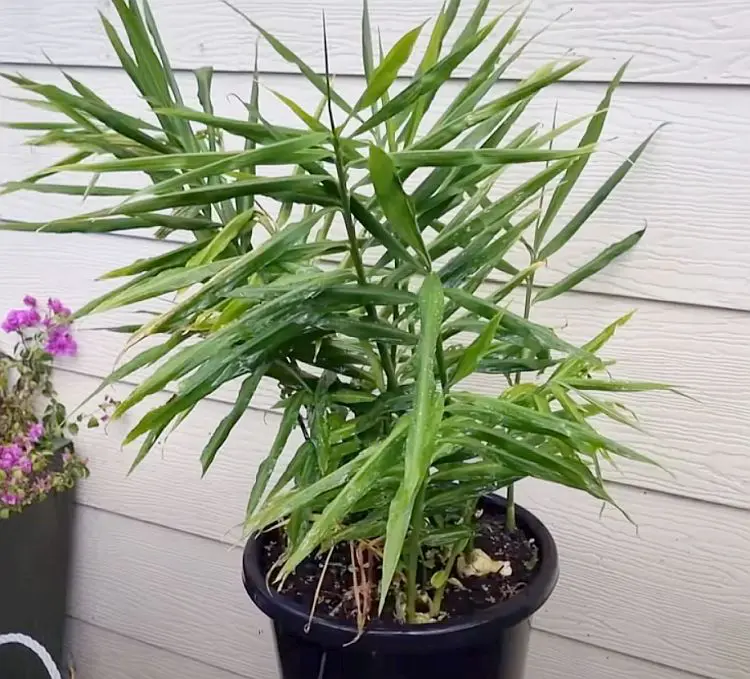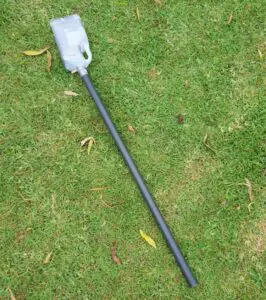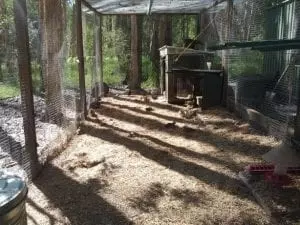We already know what a great food ginger is for its health and flavour qualities, but unfortunately it’s always expensive to buy. Growing your own ginger that you can preserve or eat as you like is much more cost effective- especially if you buy some rhizomes from a shop and plant them yourself. Here, we show you how to grow ginger at home from store-bought ginger, in containers. We’ve broken the process down into 5 easy-to-follow steps.

Buy Some Ginger
The first step is to buy some ginger rhizomes. When buying ginger for planting, choose plump, fresh-looking pieces that are at least 2″ square. If the ginger pieces have an eye or two, consider it a bonus, because that indicates readiness for shooting. Stay away from pieces that look old, shrivelled or overly dry, because they may not contain enough energy to sprout a successful plant.

Fruit shops, markets and supermarkets are probably the cheapest places to buy ginger for planting. If you have a friend that already grows ginger, perhaps they’ll give you some to get started with. Shopping online for organically-certified ginger will give you a good product, but the price is likely to be higher.

Soak the Ginger in Water
Commercial ginger is often treated with a growth inhibitor to stop it from sprouting prematurely while it sits on supermarket shelves. To dissolve this sprayed-on growth inhibitor, soak the ginger in water for at least 24 hours before planting. Don’t let it soak any longer than 24 hours, or it will start to ferment and go ‘mushy’.

Plant the Ginger
Choose a large pot, bucket, or container like a cutoff barrel. Fill it with a premium potting mix, leaving a few inches of space at the top.
Divide the ginger into smaller pieces with sharp secateurs or break it apart by hand. As shown above, I like to keep mine on the larger side (at least 2″ wide), because I’ve found that small pieces tend to shrivel, rot & die and ultimately not grow as successfully as the larger pieces. Spread the pieces evenly around the container then simply cover them with more potting mix.
Ginger doesn’t need to be planted deeply as the rhizomes are horizontal rather than vertical growers. Burying too deeply may inhibit development, which in turn will lead to rotting. Once planted, water your ginger occasionally until it starts sprouting. Ginger plants can take quite some time to appear, so be patient, and don’t panic- it’s often 8-10 weeks before you see anything appear above the soil line. Even in warm climates, it’s not unusual for ginger to wait until the start of summer to appear. For more detail on ginger growing conditions, here is our complete guide.

Maintain the Plants
Once the ginger has sprouted and is growing well, make sure it gets enough water. Ginger grows best with a lot of water, but like most food plants, it doesn’t like wet feet. If your ginger is growing in potting mix that drains well, you’ll definitely need to water frequently.
I generally water my container ginger every day throughout the subtropical summer. If I don’t, it is likely to suffer heat stress, stop growing, and even start ‘cannibalising’ its own rhizomes to get enough energy & moisture to stay alive. Ginger loves sunlight, and needs strong, direct sun to grow at its best. Sunlight has a direct correlation to strong root growth, and as ginger is a rhizome plant, this is all-important.

Weeds needs to be removed regularly. Weeds out-compete plants for moisture and nutrients, and this is especially true when growing in pots or small containers.
Regular fertilising is important too. The high water requirements of ginger does means that some soil nutrients will be washed away, so a regular sprinkle of an organically-based liquid fertiliser will help plants get the nutrients they need to maintain strong growth right throughout the season.

Harvesting Container Ginger
The growing period for ginger is quite long, and can vary from 4-6 months depending on your climate. You can pick it a little early, in which case it is called ‘young ginger’. It makes for great eating, as it is less potent than mature ginger and doesn’t require peeling.
To get the most growth and biggest rhizomes from your ginger plants, I recommend letting them grow to maturity. This means let it grow right through summer until the mid-autumn or early winter, and harvest it once the leaves have died back.

Alternatively, if your climate is warm enough, you can leave your container ginger in situ and harvest as and when you need it. I often do this with my ginger crops planted out in my bigger raised beds, but you do run the risk of them rotting if the summer rains are heavy.
Ginger grown in containers is easy to harvest, so I recommend doing just that at the end of the season. Ginger keeps well when stored correctly, and if you don’t use it all you can simply re-plant your unused rhizomes.
To see the video version of this article, check out our youtube channel!













